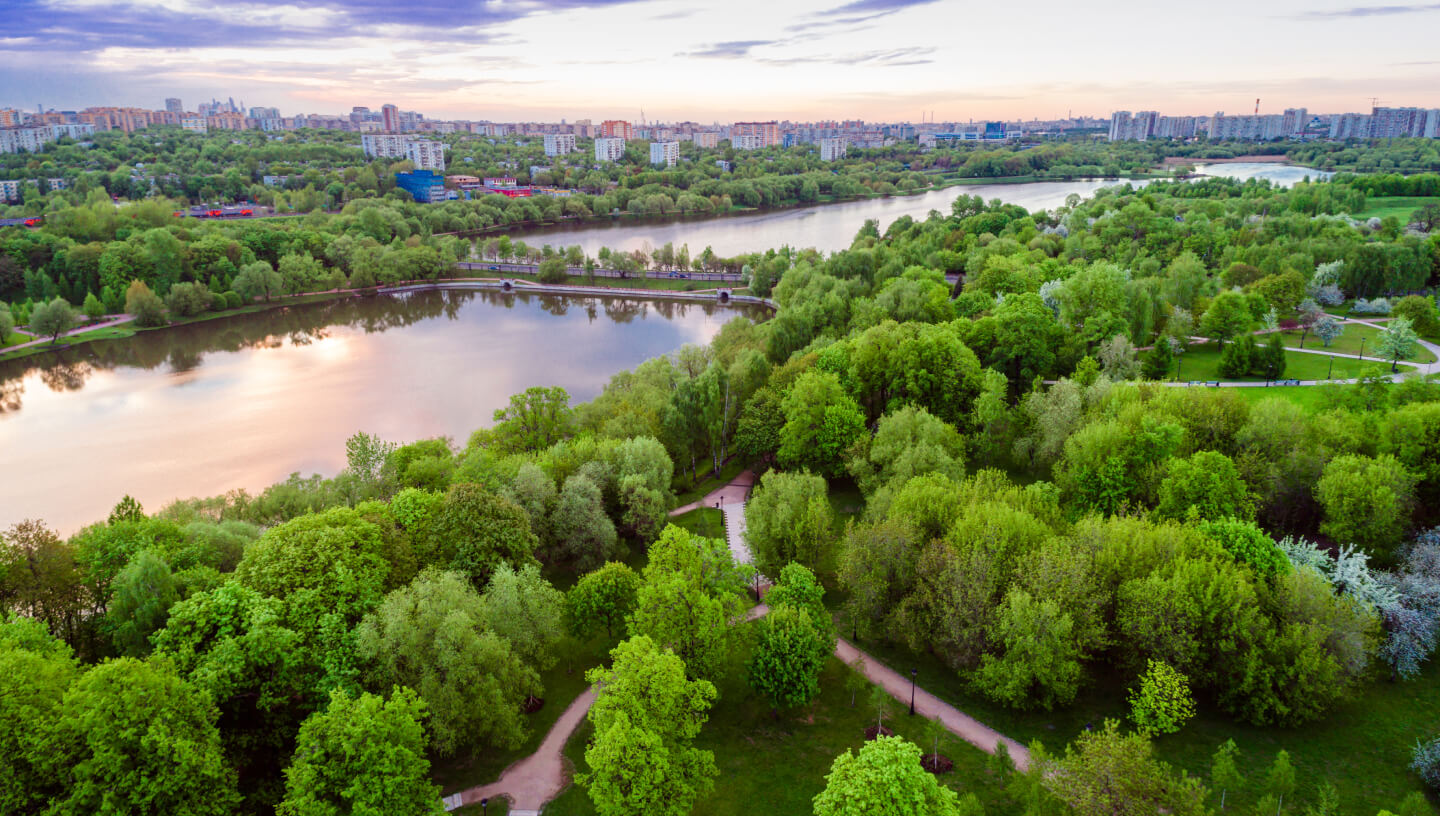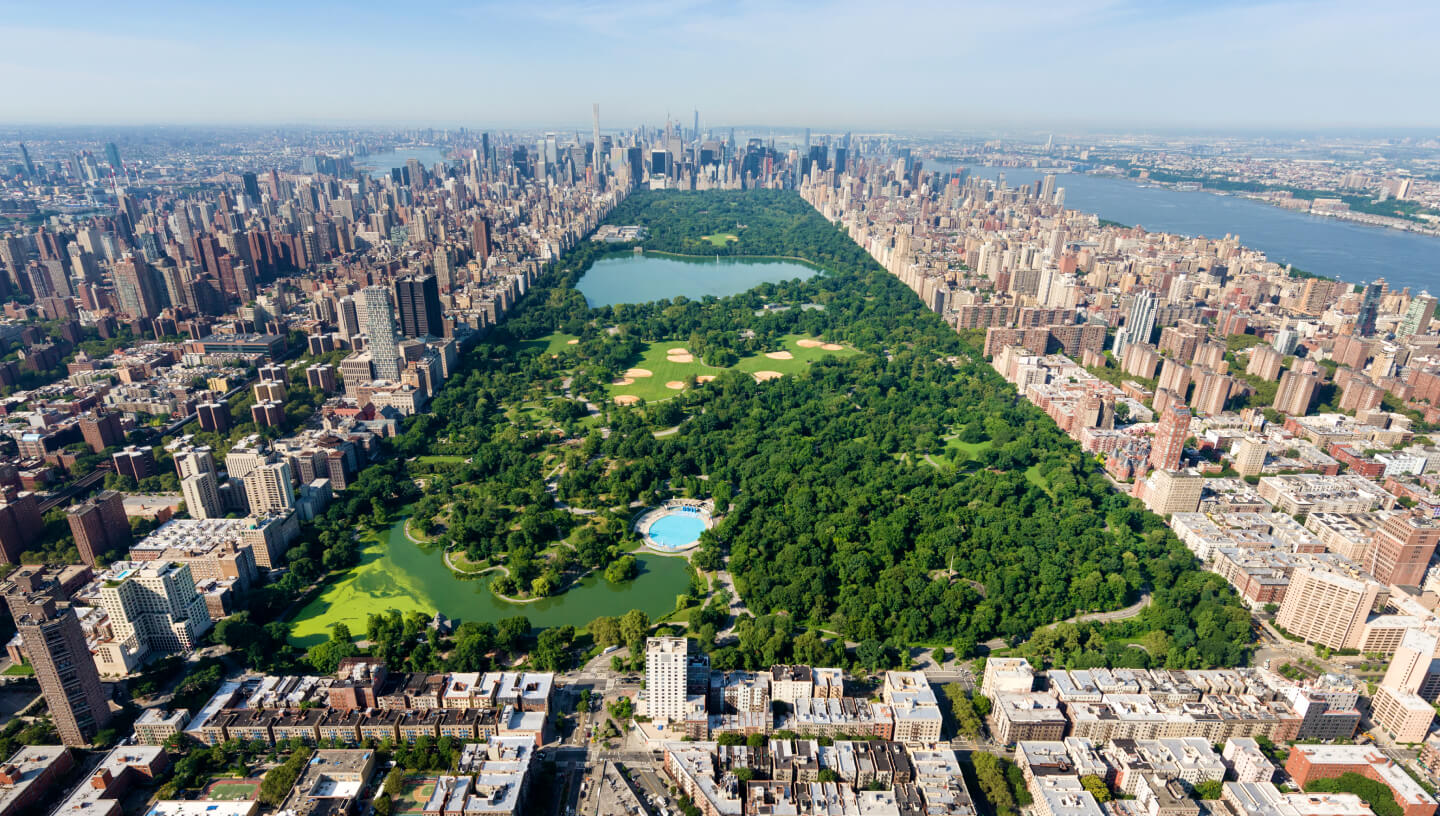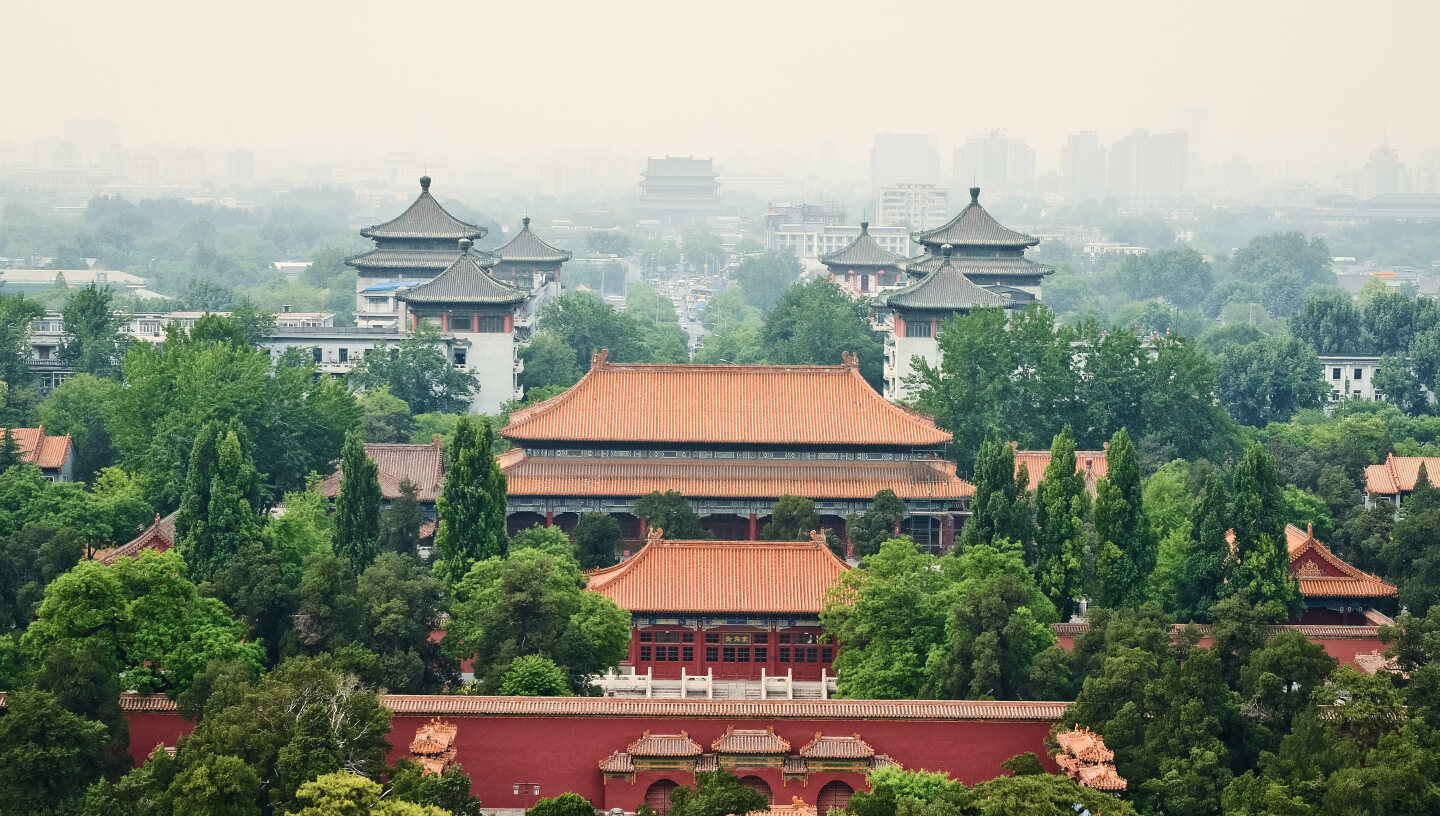Large and medium-sized cities around the world are growing at an enormous rate. If no attention is paid to the climate agenda, environmental problems grow as well: air, water and soil pollution and the issue of waste disposal. What’s more, the high population density in a comparatively small area and the frantic pace of city life place an additional strain on the psychology of the residents. In such an environment, parks, gardens and all types of green spaces are indispensable for the well-being of the city. Let’s take a look at how forests are managed in the world’s megacities, what goals governments have for them, and whether there is any development of natural features.
Forests play an important hydro-climatic role, including in maintaining the water-forest balance on their territory. Forests influence precipitation and evaporation, the fullness of rivers and other water bodies, the accumulation of groundwater, i.e. in general the water reserves of a particular natural area. In large cities the water protection properties of forests are of particular importance, as much of the land in metropolitan areas is covered with asphalt or paving stones and houses are built up. In such an environment natural water processes are disturbed and air humidity is regulated mainly not by nature, but artificially: by ventilation systems, steam installations, air-conditioners and the like. Forest islands in cities are like oases in the desert, so their presence and preservation is extremely important.
Urban forest management is of particular importance in cities. A modern metropolis is unthinkable without a large park or a network of parks, and if they are lacking, the public already sees the city as lagging behind, falling short of an advanced city centre. With the lack of green spaces in the city, residents suffer from heat, stuffiness, and often mental problems as well.
Large-scale afforestation projects are increasingly being used as a way of making cities more sustainable. The goals of sustainable forest management and forest use imply achieving and sustaining the target forest dynamics and conserving and enhancing forest reproduction and biodiversity.
The world’s biggest cities are vying for the title of the greenest metropolis. These include Moscow, Berlin, Hong Kong, New York, Vienna, Beijing, Tokyo and others. Examples of forest management vary all over the world, and the experience of foreign colleagues can be useful and exemplary for addressing greening issues in their territories.
 Photo by: TanyaSid / iStock
Photo by: TanyaSid / iStock
- Moscow
Moscow is recognised as the greenest metropolis in the world according to various European and international rankings. Green spaces occupy about 40% of the area of the Russian capital. There are large parks such as Losiny Ostrov, Sokolniki, Gorky Park, Tsaritsyno, as well as small squares and district parks. Even in the centre of the city it is not difficult to find a green area — dense green vegetation covers the Boulevard Ring, near the Kremlin there is the old Alexander Garden, not so long ago “Zaryadye” park was laid out, on the Bolotnaya embankment there is Repin’s park. Apart from that, virtually all courtyards of residential buildings in Moscow are covered with greenery. By the way, according to statistics, the most common tree in Moscow is the linden tree. The linden tree represents 28.6% of the total number of trees in the city. Maple is in second place (24.2%). Then come poplar, ash, birch, coniferous trees and others.
This success is undoubtedly the result of a deeply thought-out forest management policy in the Russian capital. In the last 10 years, green spaces have appeared along the Garden Ring, the Krymskaya embankment has been improved, Zaryadye Park has been planted with numerous plants and trees — 760 trees and 7,000 shrubs, 27,700 square metres are occupied by perennial grasses. Such diversity of vegetation in the park is a demonstration of the forest diversity of Russia’s regions. There are northern conifers, mosses, lichens, steppe vegetation from the south of the country, a corner of mixed forest, and so on.
 Photo by: Artur Bogacki / iStock
Photo by: Artur Bogacki / iStock
- Berlin
Berlin is rightly considered one of the greenest cities in the world, with over 2,500 public gardens, parks, and scenic recreation areas. The total area of green space reaches around 5,500 hectares. Not only forests fill the natural areas of the city, but also rivers, lakes, canals and forests. According to various estimates, they occupy about 30% of the city’s total area.
The largest park in the German capital, Tiergarten, covers 210 hectares in central Berlin. This park is not only the largest in the city, but also the oldest — it’s over 500 years old. The park is not only the largest and oldest in the city, it’s also the oldest in the city — it’s over 500 years old. Today, as if to justify the name, the park is home to one of the largest zoos in the country.
After World War II, Tiergarten Park was badly damaged by deforestation. The city’s inhabitants had nothing to heat their houses with, and the park’s trees were used for firewood. Within a short time, the park was practically a wasteland, a vegetable garden and harvesting area. But, in 1961, the local government took control of the situation, and the park has been monitored ever since.
The park came under particular scrutiny following the fall of the Berlin Wall in November 1989. The reunification of the state and the capital also necessitated the reconstruction of a unified plan for the city. Thus, Tiergarten became one of the symbols of unification: residents of the former two parts of Berlin could now walk, meet, and celebrate national holidays in the same area.
Today, the main forested area of the park has been restored. There are several wartime monuments here — a memorial to fallen Soviet soldiers, a memorial to victims of National Socialism of the Sinti and Roma peoples, the Victory Column and others. A separate attraction is the English Garden that was planted in 1952 out of the 5,000 trees donated by King George VI of England. With the planting of this garden, the restoration of Tiergarten actually began.
Between 1995 and 2006, a transport tunnel was constructed on the grounds of Tiergarten, which was connected to the tracks of Berlin Main Station. The construction provoked public protests, as the disruption of the groundwater system could have caused damage to the park’s green cover. Eco-activists and animal welfare activists tried unsuccessfully to oppose the construction, but the tunnel was built and is now in operation
 Photo by: Andrew Bertuleit / iStock
Photo by: Andrew Bertuleit / iStock
- New York
New York’s Central Park has a clear rectangular shape and is a trademark of the city, on a par with Manhattan’s skyscrapers and the Statue of Liberty. And this park is the work of man. It was originally an outskirt of the city and there were several villages and farms on the site of the present park. Mostly African-Americans lived here, oppressed by social and legal laws. The land was waterlogged and had to be drained. The park opened in 1873 and covered 843 acres (341.15 hectares). The park has remained the same since then, but many changes have taken place inside over a century and a half.
The original landscape plan of the park was created by architects Frederick Law Olmsted and Calvert Vox on the principle of a classic English park. It was intended to create as natural an environment as possible, move away from the city infrastructure and remove access roads in order to create a rural atmosphere. Obviously, the authors of the project succeeded, as now the wooded part of the park looks absolutely natural. In addition, several artificially excavated lakes and ponds have been added to the park.
Throughout its existence, the state of Central Park has deteriorated several times due to economic problems in the state. For example, desolation came during the Depression of the late 1920s, then after World War II. In the late 1960s, activists among New Yorkers organized a society to restore and preserve Central Park. Together with the government, they succeeded in making the park a major green attraction. Now there are about 18,000 trees and more than 200 species of birds in the park. And before the earthworks for the park started, there were only 42 species of trees; now there are 402 species, as well as 815 varieties of different shrubs.
 Photo by: OSTILL / iStock
Photo by: OSTILL / iStock
- Hong Kong
Hong Kong is often called one of the greenest cities in the world, but it doesn’t have the giant parks of Moscow, Berlin or New York. There are plenty of relatively small parks, the largest of which is Victoria Park, measuring 19 hectares. But what’s remarkable is that the park is entirely artificial. It was formed in 1957 on the site of a former sea bay. Part of the bay was filled up and the park was laid out in this area. It got its name from the statue of Queen Victoria, which used to stand in the central city park.
Today, Victoria Park is both a recreational area and a sports centre, as many sports fields were added to the park after a major renovation at the beginning of the 21st century.
Hong Kong also has a Central Park. It is much more modest than Victoria’s: it is 8.16 hectares in size, but it was also completely man-made. The decision to build the park was made in the 1980s and the park was inaugurated in 1991.
A special feature of the Central Park is that its trees are inhabited by numerous birds of different species, mainly from the Malesia region. This choice was made for the sake of preserving those bird species that have become endangered due to deforestation. Special canopy tracks have been set up in the pakra for birdwatching.
Another artificially created park in Hong Kong is Kowloon Park. It is located in the Chimsach district and was opened in 1970. The peculiarity of this park is that many different kinds of trees are planted here, some of which are rare and valuable species. The park looks like a kind of tree museum. There are Chinese banyan trees, adama trees, bread and fire trees and other kinds of plants. The city government and experts also pay special attention to the state of this forest area.
 Photo by: Daria_Serdtseva / iStock
Photo by: Daria_Serdtseva / iStock
- Beijing
Whereas London has a green environment of 50%, Paris 21%, Beijing was not even close to 4% until recently. Nevertheless, the Chinese capital is home to one of the largest parks in the world, Beihai. This park is remarkable not only for its size (68 hectares), but also for its history.
The history of Beihai Park goes back to the 10th century. It was laid out as an imperial garden and for almost a thousand years was closed to the general public. It was only in 1925 that the natural beauty of the park was opened to the public.
In ten centuries Beihai Park has become a collection of Chinese architectural gems as the White Pagoda ‘Bai Ta’, the Palace of Five Dragons, the Temple of Eternal Tranquility and the white marble Bridge of Eternal Tranquility were built here, as well as many other masterpieces. More than half of the park is occupied by a lake, with Qinhuangdao Jade Island at its centre.
The natural beauty of Beihai Park has been called an unparalleled example of landscape art. The natural complex created in the park exemplifies the centuries-old tradition of Chinese horticulture. Nowadays, the Beihai forestland is strictly maintained and the natural landscape is under special supervision.
Elsewhere in the Chinese capital, the development of Beijing’s green environment has made great strides in the last ten years, thanks to the Chinese authorities’ proactive efforts. During the 13th Five-Year Plan period (2016 to 2020) alone, 700 new parks were added to Beijing. And between 2012 and 2015, Beijing’s forested area increased by 54 million trees. Thus, the green environment in this megacity now accounts for 44%.
It is remarkable that forest management in the world’s megacities has so many different options. Each of them has one goal in common, which is to preserve and increase the city’s green cover. Just a few examples show that, in fact, each park has its own ‘speciality’ — it may be a special relationship to forest tree species, to bird or animal conservation, to water resources or to the natural landscape. And it is obvious that the forest future of the metropolis receives considerable attention everywhere.
Author: Yekaterina Lidskaya
Cover photo: naphtalina / iStock








Comments